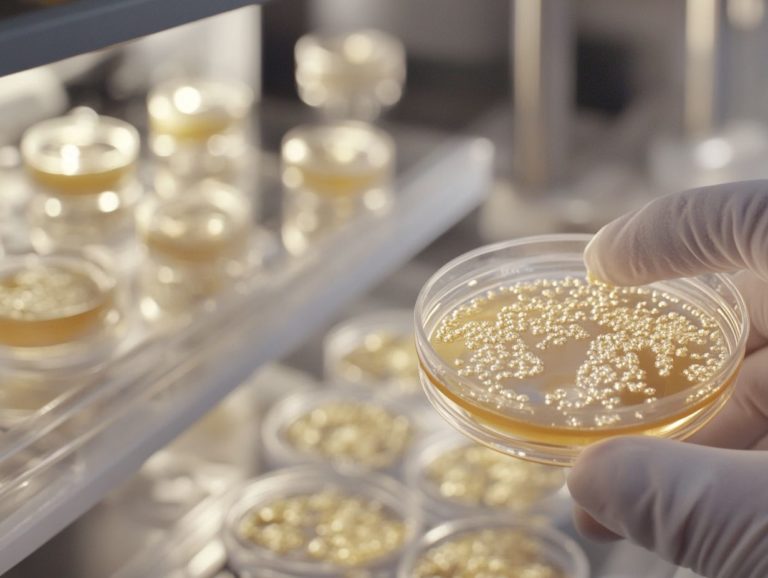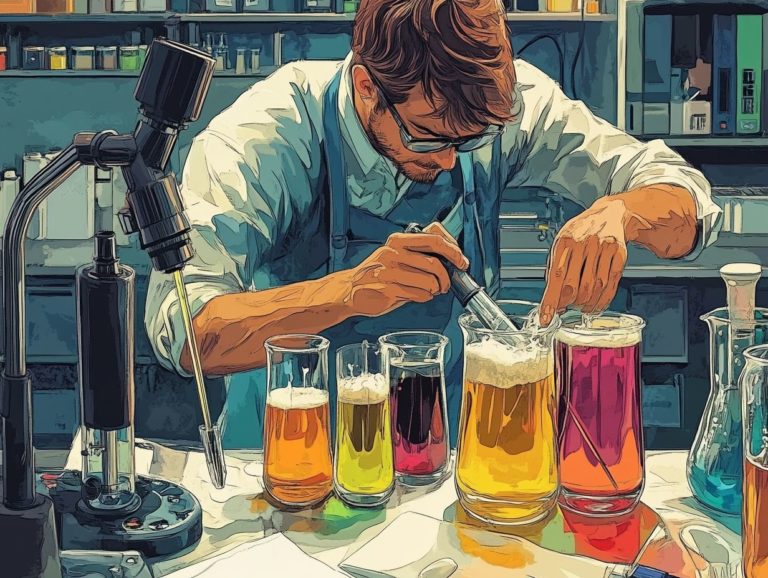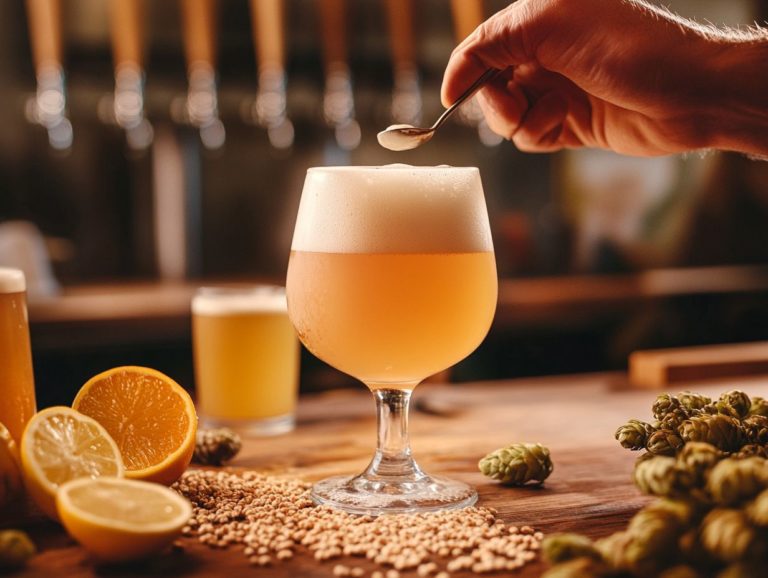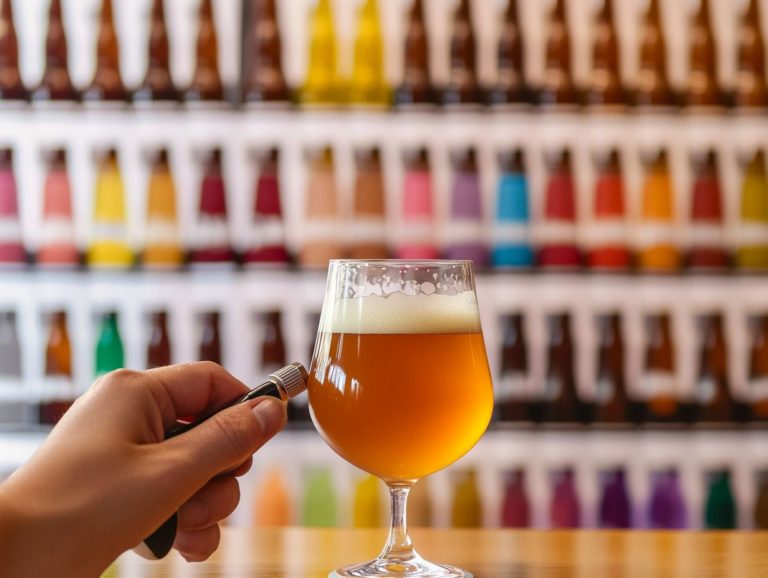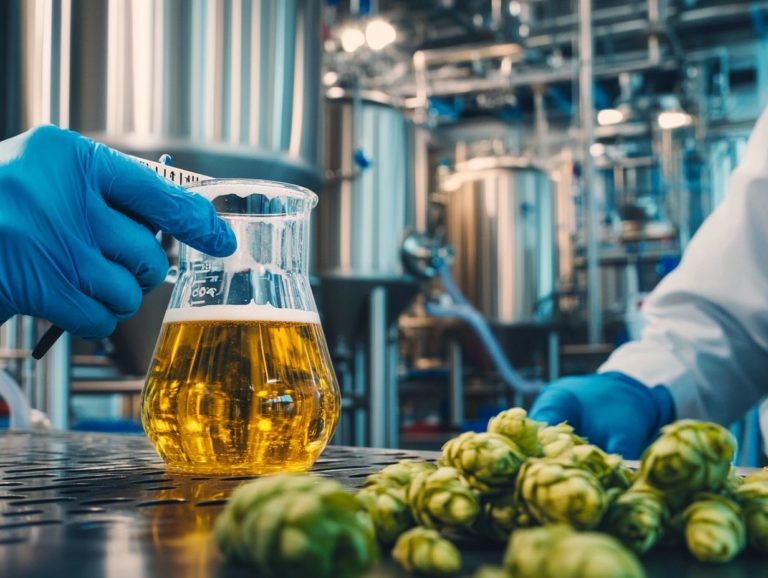How to Manage Your Brewing Environment
Crafting the perfect brew transcends mere ingredient selection. It demands meticulous management of your brewing environment. Elements such as temperature, humidity, light, and air quality are instrumental in shaping the flavor and overall quality of your beer. This applies whether you’re working in professional breweries or utilizing a homebrew system.
This article delves into the significance of controlling these factors. It guides you on how to create an ideal brewing space. You ll also discover common pitfalls to avoid and troubleshooting tips for challenges that might crop up, such as dealing with wastewater compliance and optimizing your brewing process.
Join us on this journey to elevate your brewing skills by incorporating sustainability certification and eco-friendly practices.
Contents
- Key Takeaways:
- Why Is It Important to Manage Your Brewing Environment?
- What Factors Affect Your Brewing Environment?
- How to Create an Ideal Brewing Environment?
- What Are the Common Mistakes in Managing a Brewing Environment?
- How to Troubleshoot Issues with Your Brewing Environment?
- 1. Temperature Fluctuations
- 2. Mold or Mildew Growth
- 3. Poor Air Circulation
- Frequently Asked Questions
- What does it mean to manage your brewing environment?
- Why is it important to manage your brewing environment in breweries and homebrew clubs?
- Control Temperature and Boost Energy Efficiency in Brewing
- Keep Your Brewing Environment Clean and Comply with Wastewater Regulations
- Enhance Air Quality and Embrace Environmental Sustainability in Brewing
- Maintain Consistency and Adopt Eco-Friendly Brewing Practices
Key Takeaways:
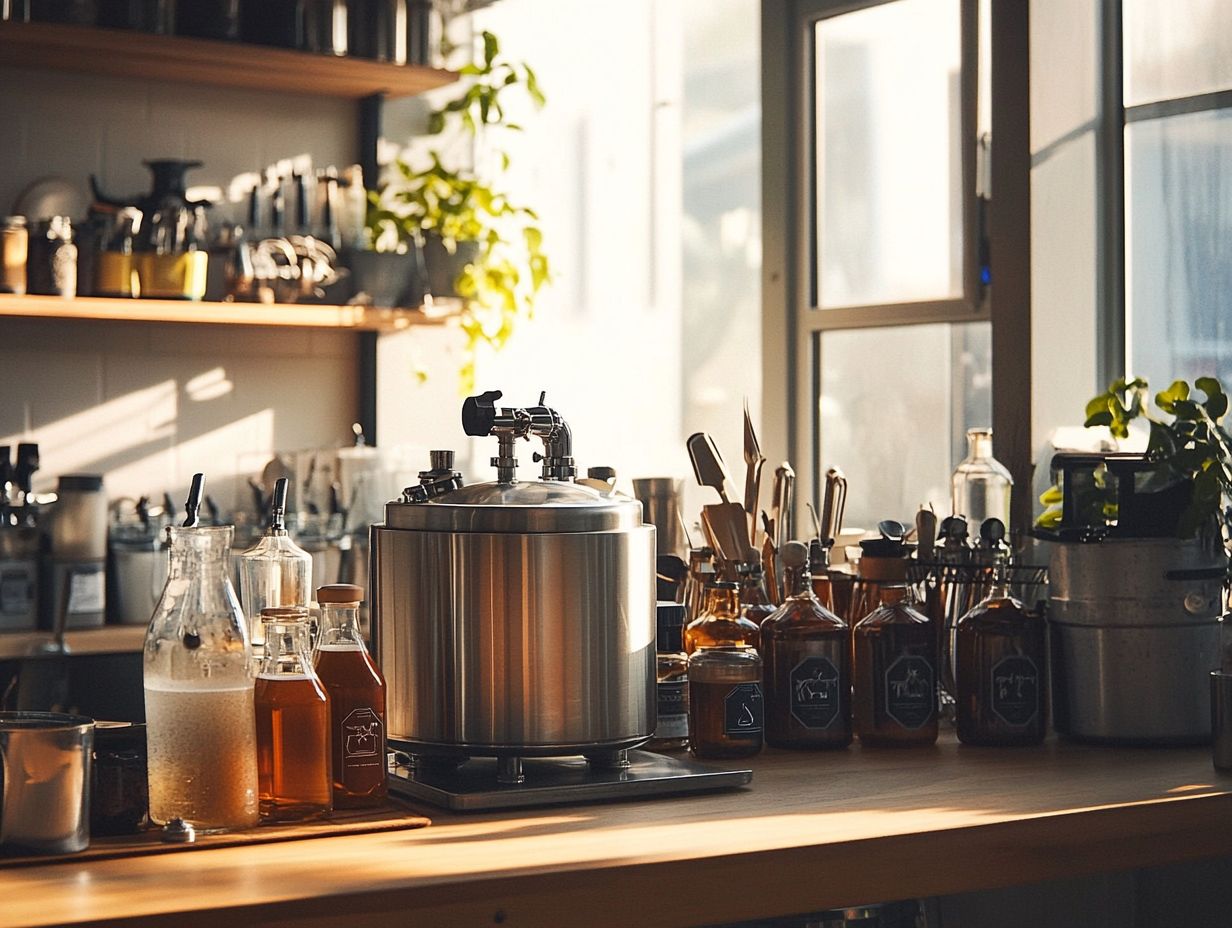
- Choose the right location and control temperature and humidity to create an ideal brewing environment.
- Proper lighting and air quality are crucial factors to consider in managing your brewing environment. This includes using biodegradable cleaning supplies and recycling materials.
- Neglecting temperature and humidity control, using inadequate lighting, and neglecting air quality are common mistakes to avoid when aiming for environmental sustainability.
Why Is It Important to Manage Your Brewing Environment?
Managing your brewing environment is essential, not just for the quality of your craft beer, but also for maintaining sustainability within your brewery operations. This includes water-saving practices and sustainably produced ingredients.
A well-maintained brewing environment can drastically reduce your environmental impact, enhance financial performance, and encourage the implementation of eco-friendly brewing practices.
This involves important parts like energy management, wastewater compliance, and optimizing your brewing equipment. Implementing circular business practices can also enhance your efforts.
By focusing on resource usage and quality control, you can produce a high-quality product while minimizing your ecological footprint. This aligns with sustainability certification standards established by organizations such as the Green Business Bureau and Ecolab.
What Factors Affect Your Brewing Environment?
Several factors can significantly influence your brewing environment. Each plays a vital role in determining the quality and sustainability of your final product, including energy consumption reduction and the use of sustainable farms.
Temperature and humidity are essential for fermentation processes. Adequate light and air quality are also crucial for creating optimal brewing conditions.
These elements do more than just affect the brewing process; they also have a substantial impact on energy consumption and the overall quality of the craft beer you produce, whether you are part of a homebrew club or working in a large-scale brewery.
By effectively managing these factors, you can foster a more eco-friendly brewing operation and enhance your resource usage.
1. Temperature
Temperature is a key aspect of your brewing environment. It directly impacts fermentation rates and shapes the flavor profile and quality of your craft beer.
By managing temperature effectively, you ensure that yeast flourishes, promoting consistent fermentation and avoiding off-flavors that extreme heat or cold can cause. Utilizing reusable yeast can also support sustainability efforts.
You ll often rely on thermometers and fermentation chambers enclosed spaces designed to maintain optimal temperatures to monitor fluctuations and make necessary adjustments with ease.
Using insulated fermenters or temperature-controlled cooling jackets can enhance energy efficiency and help you maintain optimal levels without excessive energy waste. This supports broader environmental sustainability goals by reducing your brewery’s energy consumption.
Incorporating advanced brewing systems equipped with integrated temperature sensors allows for real-time monitoring, supporting precision and contributing to sustainable brewing practices.
Developing a keen understanding of temperature dynamics is vital for achieving the desired characteristics in every batch you brew.
2. Humidity
Humidity levels in your brewing environment can profoundly impact fermentation and overall quality control in craft beer, affecting both its taste and aroma. Investing in moisture control systems can contribute to better resource usage and lower environmental impact.
When the moisture content in the air fluctuates, you may notice variations in yeast activity, which can lead to off-flavors or inconsistent batches. This is particularly critical when using organic materials, as they are more sensitive to environmental changes. Understanding the impact of humidity is key to brewing great beer!
High humidity can slow down evaporation during fermentation, while low humidity might lead to excessive loss of volatile compounds. Both scenarios can significantly compromise the character of your final product.
To maintain optimal humidity levels, consider employing strategies such as climate control systems, using hygrometers for precise monitoring, and conducting regular environmental assessments to ensure that your brewing conditions remain stable throughout the process.
3. Light
Light exposure can significantly impact the brewing process, leading to environmental degradation of the ingredients and ultimately affecting the quality of your craft beer. Effective lighting controls are vital not only for quality but also for maintaining environmental sustainability.
When you don’t control light exposure especially ultraviolet (UV) light and certain wavelengths of visible light you risk triggering undesirable reactions that can compromise your beer s stability and flavor. These interactions often result in unpleasant skunky off-flavors, particularly in lighter beers, diminishing overall palatability. Prolonged exposure to sunlight or artificial lighting can negatively affect essential ingredients like hops and malt, which are vital for the aromatic and taste characteristics of your brew.
To preserve the integrity of both flavor and stability, it’s crucial to implement effective measures such as using brown bottles or protective kegs. This way, you can ensure that the final product remains as refreshing and enjoyable as you intended.
4. Air Quality
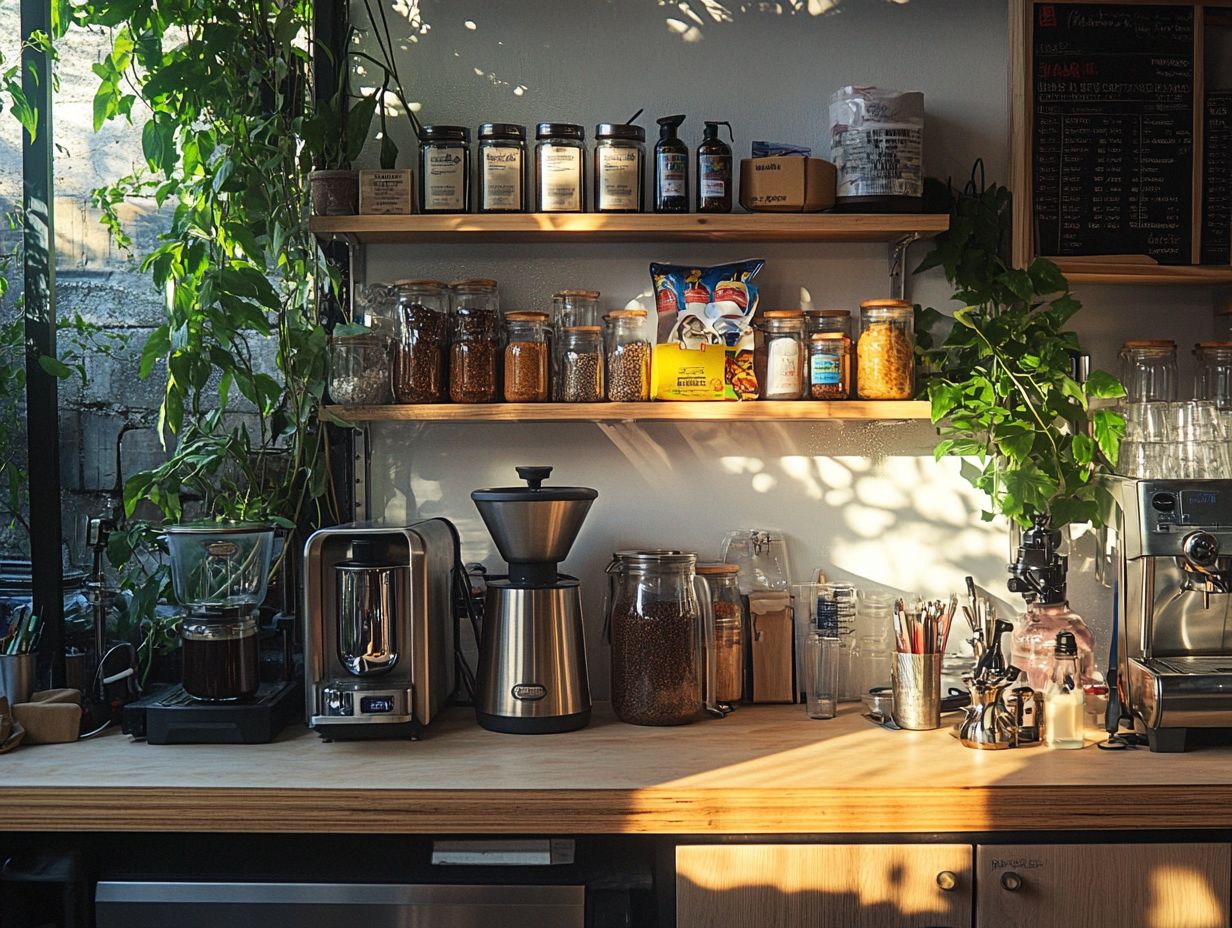
Maintaining high air quality in your brewing environment is essential for fermentation and food safety, helping to minimize the risk of off-flavors in the craft beer you produce. Employing air filtration systems can significantly contribute to a cleaner, safer brewing space.
The importance of air quality goes beyond just looks; it plays a pivotal role in how yeast and other microorganisms function during fermentation. Elevated levels of airborne contaminants can lead to unwanted microbial growth, jeopardizing not only the brewing process but also consumer health.
By implementing strategies such as air filtration systems, regular environmental monitoring, and adhering to Good Manufacturing Practices (GMP), you can create an optimal atmosphere for brewing. This can also include initiatives like rainwater catchment for cleaning and other uses.
Techniques like HEPA filtration and UV sterilization further enhance air purity, fostering a healthy fermentation environment. This not only results in a superior product but also ensures that you meet necessary food safety standards.
How to Create an Ideal Brewing Environment?
Creating the perfect brewing environment requires careful control over key elements like temperature, humidity, lighting, and air quality. Incorporating environmental best practices like using biodegradable cleaning solutions and recycling spent grain can further enhance sustainability.
By doing so, you can ensure that the brewing process remains efficient and the final product is of exceptional quality.
Embracing eco-friendly practices and optimizing your brewing equipment not only elevates the craftsmanship of your beer but also enhances your sustainability efforts. These efforts may include using organic materials and implementing carbon accounting methods.
Participating in community brewing initiatives fosters a sense of responsibility towards the environment, allowing you to contribute positively while enjoying the art of brewing.
1. Choose the Right Location
Selecting the perfect location for your brewery is essential for crafting an optimal brewing environment. This decision impacts various factors, including access to nutrient-rich soil for growing your own hops and other ingredients. It also determines the types of raw materials you can source locally, including hops and grain.
This choice directly influences your access to natural resources and the implementation of sustainable practices. A well-considered site not only supports sustainable initiatives, such as cutting down on transportation emissions by sourcing ingredients nearby, but it also fosters a strong connection with the community. This opens the door to collaborative brewing efforts with local farmers and suppliers.
The geographical setting plays a crucial role in determining the availability of high-quality water sources, which are vital for brewing. Utilizing water-saving practices can further enhance the sustainability of your operations.
Moreover, the unique characteristics of your chosen area will impact your selection of brewing equipment, such as energy-efficient systems that align with your environmental goals. This might include investing in systems that allow you to brew smaller batches to better manage resources. Thoughtful site selection enhances resource management and underscores your brewery s commitment to sustainability.
2. Control Temperature and Humidity
Effectively managing temperature and humidity is crucial for optimizing your brewing process and enhancing energy efficiency within your brewery operations. Effective management also ties into broader supply chain practices.
By leveraging advanced technology like programmable thermostats, humidity sensors, and data logging systems you can significantly elevate the precision of your control measures. Companies like Craftmaster Stainless offer advanced brewing systems that integrate such technologies effectively.
Maintaining the right fermentation temperature boosts yeast activity and enhances flavor. Appropriate humidity levels are key to preventing spoilage.
Incorporating equipment like heat exchangers and automated ventilation systems not only helps achieve the ideal conditions but also plays a vital role in reducing energy consumption. Furthermore, integrating smart brewing systems allows you to remotely monitor and adjust environmental factors, ensuring consistent quality while optimizing your resource usage.
3. Use Proper Lighting
Utilizing the right lighting in your brewing environment is essential for maintaining quality control and reducing the environmental impact of the brewing process.
With adequate illumination, you can meticulously inspect both ingredients and equipment, while simultaneously creating a more inviting atmosphere that fosters focus and efficiency among your staff. Lighting significantly influences the sensory attributes of beer; variations in brightness and hue can alter perceptions of color and clarity.
You should explore LED solutions that provide adjustable brightness, longevity, and energy efficiency all of which help cut costs and enhance sustainability. Additionally, implementing smart lighting systems allows for automated dimming during off-peak hours, conserving energy without compromising functionality.
4. Improve Air Quality
Improving air quality in your brewing environment is vital for achieving effective fermentation processes and ensuring overall food safety, all while contributing to sustainable brewing practices.
By implementing advanced ventilation and filtration systems, you can significantly reduce airborne contaminants that may jeopardize both the quality of the air and the final product. These systems play a crucial role in maintaining optimal conditions for yeast health, which directly impacts fermentation efficiency.
Proper air circulation minimizes the risk of spoilage organisms and undesirable flavors, ensuring that each batch you produce meets the highest standards. Investing in air quality management boosts product safety and builds consumer trust!
This investment not only enhances product safety but also supports compliance with industry regulations, ultimately fostering consumer trust and satisfaction in your brand.
What Are the Common Mistakes in Managing a Brewing Environment?
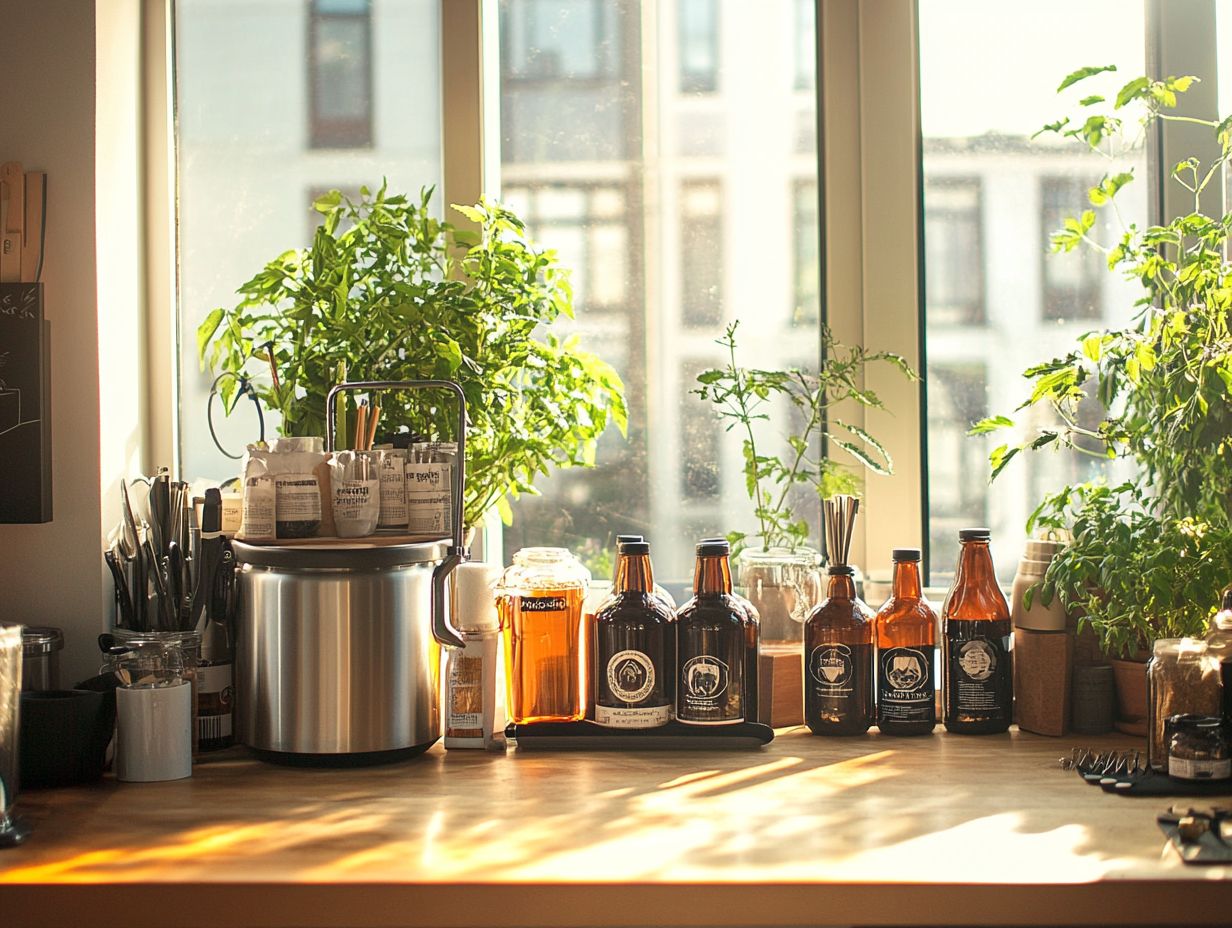
Grasping the common missteps in managing a brewing environment empowers you to sidestep pitfalls that could undermine both the brewing process and the quality of your craft beer. By paying attention to factors such as temperature and humidity control, ensuring proper lighting, and maintaining optimal air quality, you can avoid the frequent errors that often lead to disappointing results in your brewing endeavors.
1. Ignoring Temperature and Humidity Control
Ignoring temperature and humidity control is one of the most detrimental mistakes you can make, putting at risk the brewing process and ultimately leading to flawed craft beer.
The intricacies of brewing demand a keen attention to detail, as precise conditions are essential for unlocking the distinctive flavors and aromas that define a high-quality beverage. When you overlook these critical factors, you not only risk disrupting the fermentation process but also invite off-flavors and aroma imbalances that could ruin your final product.
Implementing effective monitoring strategies, like utilizing temperature and humidity sensors throughout your brewing environment, enables you to make necessary adjustments at critical stages. By maintaining stable conditions, you can significantly enhance the overall quality and consistency of your craft, ensuring that each batch delivers the intended experience for your consumers.
2. Using Inadequate Lighting
Using inadequate lighting in your brewing environment can lead to the degradation of ingredients and negatively impact the overall quality of your craft beer. When you rely on poor lighting, it s easy to miss critical nuances in the color, clarity, and overall appearance of your brews, which can mislead both the brewing process and your quality assessment.
Insufficient visibility can result in unintended mistakes when measuring ingredients, ultimately affecting the flavor profile and aroma of your creations. To maintain the integrity of your brewing process and the final product, implementing appropriate lighting solutions is essential.
By utilizing full-spectrum LED lighting, you can mimic natural sunlight, allowing you to accurately perceive and assess your ingredients while minimizing the risk of photo-oxidation (the degradation of ingredients due to light exposure). Adjustable lighting systems help you create optimal conditions for various stages of brewing, from mashing to fermenting, ultimately elevating your end result and enhancing your overall brewing experience.
3. Neglecting Air Quality
Neglecting air quality in your brewing environment can lead to fermentation issues and food safety concerns, ultimately jeopardizing the reputation and success of your brewery.
Inadequate air quality creates a breeding ground for unwanted microbial growth, resulting in off-flavors and spoilage that can compromise the quality of your final product. Factors such as excessive dust, volatile organic compounds, and improper ventilation can exacerbate fermentation problems. Therefore, it s essential for you to establish stringent air quality controls.
By implementing air filtration systems, regularly monitoring humidity and temperature, and utilizing cleanroom technologies, you can create an optimal environment for fermentation. Prioritizing these practices not only safeguards your products but also enhances the overall safety and enjoyment of your beverages for consumers!
How to Troubleshoot Issues with Your Brewing Environment?
Troubleshooting issues within your brewing environment is essential for maintaining optimal conditions and ensuring the quality of your craft beer. By addressing temperature fluctuations, tackling any mold or mildew growth, and improving air circulation, you can significantly enhance both the brewing process and the final product’s quality.
Focusing on these factors will elevate your brewing game and ensure that every batch surpasses expectations.
1. Temperature Fluctuations
Temperature fluctuations pose a significant challenge in the brewing environment. They can disrupt fermentation and compromise the quality of the craft beer you produce. These changes may stem from various factors, including changes in ambient conditions, equipment inefficiencies, and even your brewing schedule.
Such variations can lead to inconsistent yeast activity, resulting in off-flavors or undesirable aromas in the final product. To mitigate these risks, use temperature-controlled fermentation vessels to monitor and adjust conditions precisely. This creates a stable environment for yeast to thrive.
Insulating storage areas and employing temperature-regulating equipment can further safeguard your brewing process from unwanted external influences. This approach ultimately ensures a more consistent and high-quality beer.
2. Mold or Mildew Growth
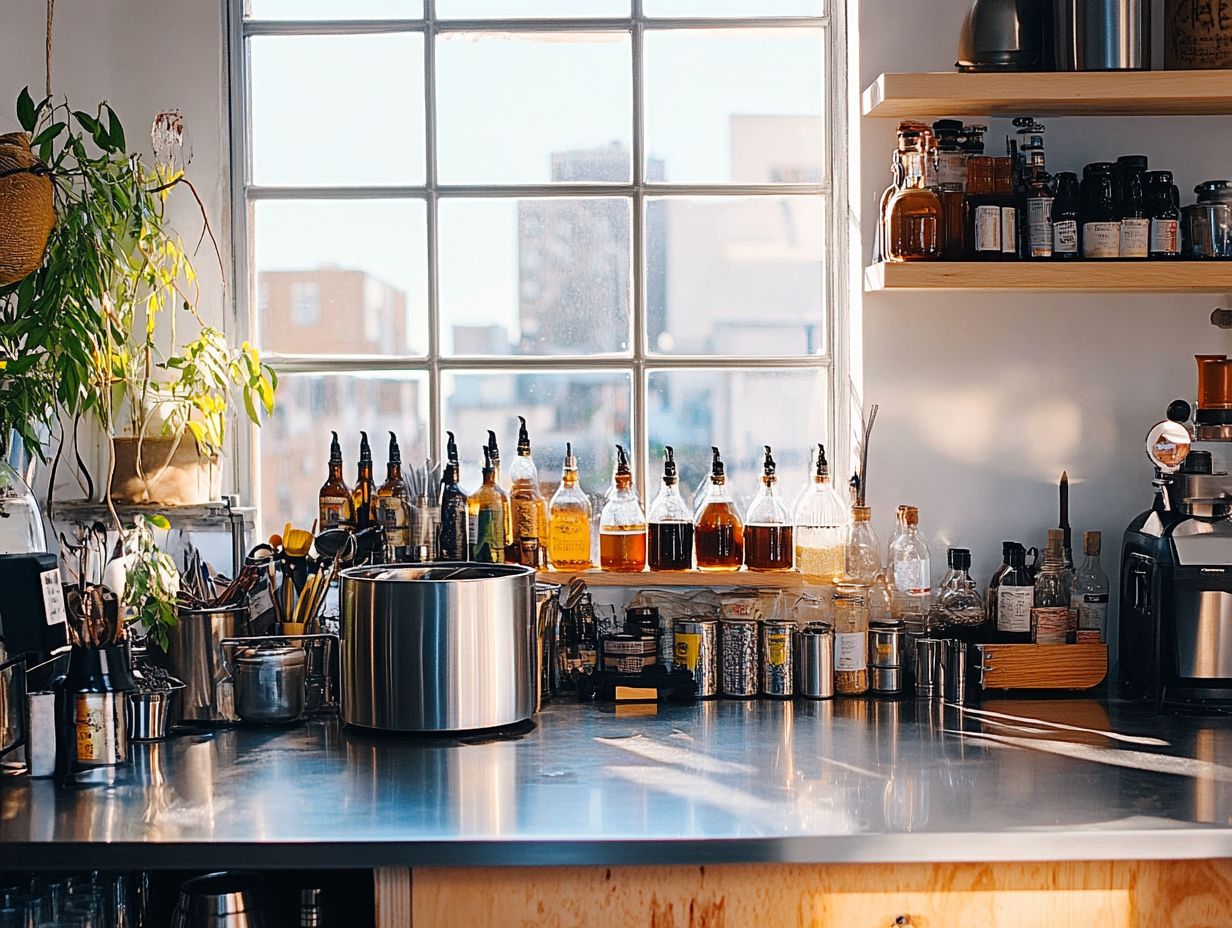
Mold or mildew growth in your brewing environment can present serious food safety risks and compromise the fermentation process, resulting in off-flavors that can ruin your craft beer.
These unwelcome fungal guests thrive in damp, poorly ventilated spaces. Warmth and moisture create the perfect breeding ground. That’s why maintaining a clean brewing area is essential for preserving the quality of your beverage and safeguarding the health of your consumers.
Implement regular sanitation routines alongside ensuring good air flow and humidity control. These should be non-negotiable practices for any craft brewery. By meticulously cleaning your brewing equipment, storage areas, and packaging processes, you can significantly reduce the risk of mold and mildew growth.
This proactive approach enhances the overall quality and safety of your products, giving your customers the best possible experience.
3. Poor Air Circulation
Poor air circulation in your brewing environment can significantly hinder fermentation and adversely affect overall air quality. This ultimately impacts the quality control of your craft beer.
When airflow is insufficient, you may experience unwanted temperature fluctuations, heightened humidity, and a buildup of volatile compounds. These factors can disrupt yeast performance, jeopardizing the integrity of your final product.
To combat these challenges, consider installing ceiling fans and utilizing exhaust systems to enhance ventilation. Regularly monitoring environmental conditions with simple tools like hygrometers and thermometers will help you maintain good air flow.
By strategically placing air filters, you can improve airflow and eliminate particulates that could compromise brewing quality. This simple step can create a vibrant fermentation space, leading to even better beer.
Frequently Asked Questions
What does it mean to manage your brewing environment?
Managing your brewing environment refers to the actions and practices you take to ensure that the conditions in which you brew your beer are optimal for producing a high-quality and consistent final product. This includes controlling factors such as temperature, cleanliness, air quality, and resource usage.
Implementing eco-friendly practices, such as energy management and using biodegradable cleaning supplies, can also help you maintain an environmentally sustainable brewing environment.
Why is it important to manage your brewing environment in breweries and homebrew clubs?
Managing your brewing environment is crucial because it directly affects the quality and taste of your beer. Temperature fluctuations, contamination, and environmental factors like energy consumption and environmental impact can all affect the final product.
To mitigate these risks, it is essential to have a controlled and well-maintained brewing environment that follows environmental best practices.
Take action today to improve your brewing environment! Implement these practices and enjoy the benefits of high-quality craft beer.
Control Temperature and Boost Energy Efficiency in Brewing
The ideal temperature for brewing beer is typically between 65-75 degrees Fahrenheit. To maintain a consistent temperature, you can use a thermometer to monitor it. Adjust it by placing the fermenter in a temperature-controlled room or by using a heat source or cooling system.
For homebrew systems, maintaining temperature consistency is essential for quality control and overall environmental sustainability.
Keep Your Brewing Environment Clean and Comply with Wastewater Regulations
Don t wait! A clean brewing environment is crucial for preventing contamination and ensuring your beer shines in quality. Make sure to regularly clean and sanitize all brewing equipment, work surfaces, and storage containers.
Use biodegradable cleaning supplies whenever possible. It is also essential to properly dispose of any waste or byproducts from the brewing process, including spent grain and yeast reuse, which can be diverted to organic farms for nutrient-rich soil.
Enhance Air Quality and Embrace Environmental Sustainability in Brewing
Breathe easy while brewing! Poor air quality can lead to off-flavors and contamination in your beer. Improve air quality with good ventilation, and eliminate potential sources of odors or pollutants.
Regularly clean and sanitize the air with an air purifier, a device that removes odors and contaminants, or an ozone generator. Consider incorporating rainwater catchment systems and sustainably produced ingredients from organic farms into your brewing process for better environmental sustainability.
Maintain Consistency and Adopt Eco-Friendly Brewing Practices
Consistency is key in brewing. To maintain a consistent environment, it is essential to have a well-planned and organized brewing process. This includes using standardized recipes and following proper sanitation procedures.
Regularly monitor and adjust factors such as temperature and air quality. Optimize the brewing process by incorporating energy efficiency and reducing water usage. This can significantly impact both finances and the environment.

